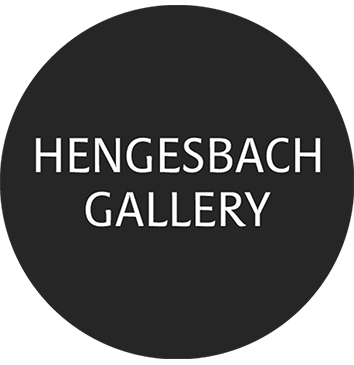CHRISTOPHER MULLER
September 1 – October 16, 2020
When our seeing adjusts to the world, it does not always do so in the same way. Implicit mental predispositions direct our seeing in different ways:
Seeing can be holistically oriented and aim to perceive a constellation of things as a coherent situation. This need corresponds to the camera view, which from a defined position with clearly set boundaries condenses visual variety into the unity of an image in a brief moment.
But seeing can also wander, pick something up, and connect it with something entirely different in a new relationship. This mode of seeing corresponds to the medium of collage.
Seeing can also slowly penetrate a complex scene, starting from a vague overview and gradually working its way from detail to detail, increasingly arranging the connections in a more detailed manner. This way of seeing corresponds to painting, which in a slow developmental process unfolds a scene into its branches and contrasts.
Christopher Muller has been working for many years on developing these fundamentally different modes of seeing across various media. In his exhibitions, he has so far kept the different media separate. Now he brings them together and presents them on equal footing.
His general interest in the world is directed at our everyday immediate environment—what we can reach with our arms in close proximity. Seeing is not unaffected by this orientation, because everything I perceive visually in this near-world is also something I can grasp. Close-up seeing, in contrast to distant seeing, is always also bodily seeing.
The three different types of seeing are also associated with different bodily approaches. Precisely capturing an overall situation involves the awareness that I can assign each thing its place at a predetermined location. A different awareness is required to find a contrasting complement for a visual event. I must perform motor searching movements and, in adding one thing to another, make both fit together. Distinct again is a type of movement that lets one part build upon another. For this, I must physically align the elements with one another.
The basic prerequisite for seeing is light. Light illuminates the atmosphere, light falls on surfaces, which partially absorb and partially reflect it, thereby producing the diversity of colors. While in Muller’s earlier works, uniform lighting drew attention to the selected order of things, light has become an active agent in his more recent works. It highlights certain objects while casting others into inconspicuousness. By creating reflections, it sometimes reveals the shape and modeling of an object in the first place.
The spatial proximity or distance of objects can also be dramatized by light. Glossiness and dullness give the objects an additional emotional quality. Parallel to this, Muller has intensified the dialogue between objects within the pictorial space through accumulations or diminished it through emptying, thereby generating additional arcs of tension and expectation.
Muller also no longer approaches his familiar world of objects from a frontal perspective. Instead, he places lines diagonally or at a tilt into the image and crops objects at the image edges in such a way that often only a fragment of an object’s volume is visible, while the eye must imagine the larger, off-screen portion and adjust to the resulting weight distribution. Furthermore, he sharpens the awareness of different spatial layers and their differing relation to action: the foreground is the presentation plane, the middle ground the field of action, and the background more of a zone of rest.
The thematic content of Muller’s photographic still lifes arises from the near-world of domestic living. They demand from us a very precise way of seeing. A nearly invisible small puddle of water on the edge of a countertop in the image *Plastic Bottles*, for instance, can provide the crucial clue to the motif’s interconnections. The trace of water activates in us imaginative associations of using the dish brush, of the assisting metallic pot scrubber beside it. It also links material perceptions: the water in the plastic bottle with notions of grasping the bottle, the sounds involved, the different ways of opening a screw cap versus a flip top, and despite their shared transparency, the differing sensory expectations of water and dish soap in terms of taste and texture.
This evocation of associations tells us something about our life in the world, about the pathways of associative chains in our minds, about our physical sensing and acting. Our imagining is grounded in our bodily characteristics—in the ability to let sensations travel through our body, to set our muscles into coordinated motion accordingly, and to retain this as memory potential. The finely veined marble slab at the edge of Muller’s still life *Plastic Bottles* translates this interwovenness of our body—of sensations, ideas, and muscular movement—into a tangible image.
Muller’s still lifes do not, like Dutch Baroque still lifes, aim to display the external richness and variety of our lives. He takes this external abundance as a given. Rather, he is interested in the internal richness of our imagination and in our ways of interacting with objects. In his work, objects are not symbolic references. Instead, they serve as condensations of our everyday wealth of sensations and the imaginative world that builds upon it. They are not isolated visual melodies of spatial arrangements but concerts of harmony, of movement- and memory-orientation across all our senses. They are mappings of the sensory qualities of our lives, grounded in the richness of experience that accumulates through our bodily perception.
While Muller’s painted images also speak of our senses and their harmony, they express that the richness of sensation is often tied to ambiguous perceptions and that there are differing modes of bodily access. His paintings highlight the illusory nature of our visual world, emphasizing the ambivalence of shadows, reflections, mirrorings, and darknesses. They accentuate what is merely suggestive and play with the inequality of doublings. At the same time, they address the ambiguities involved in leaving the interior—as the private realm—and stepping into the exterior—as the more distant public space. They bring the membranes of this in-between into focus: simple or double panes of glass and mirrors.
In some of the images, it is initially unclear whether one is seeing a picture or a reflection, where the intersection between mirrored image and real space lies, whether points of light are reflections of one’s own world or distant illuminations from outside. And as the material appearances seem to be undergoing a kind of growth, one does not always know what is merging with what, what is simply a superimposition, what is a mere juxtaposition, and what actually belongs together. Even the distinction between reality and its shadow becomes blurred. In his paintings, the shadow acquires a softness that makes it something alive in a world turned away from the light.
Muller’s paintings demand a slow and introspective kind of looking. While they are grounded in careful observation of the reality surrounding him, that observation is constantly broken by a reflection on his own sensation—tying the development of the formal world back to his tactile access to things. In his work, objects must be experienced as touchable bodies. This is precisely where he distances himself from photorealistic painting, which excludes such loops of reflection.
His collages, finally, can be even more alienating. They carry an inherent strangeness—and it is this that Muller embraces. His collages are made from original-sized paper fragments that seemed to arrive at his home like apparitions out of nowhere, unsolicited, not consciously invited into his domestic near-space. This is paper material that, due to its inexpensive production, enters all our homes as advertising or postcards. The paper is printed; images, graphics, and typography are forced into an imposed scale. Unlike in Muller’s photographic still lifes or paintings, the objects depicted here are not shown in their real size. Advertising graphics compress images into a format, detach them from their context, place them in a septic space, and submit them to the dominance of letters and signs.
Muller is interested in these harsh manipulations of images. He severs the functional connections between the paper pieces and positions them confrontationally against another piece of paper. Through the aesthetic unveiling of a new image, he opens a dialogue about the search for meaning and the subtext behind visual impulses.
In this way, the brutal dance of a cascade of black rubber boots in *Boots*, specially marked with red stars, can be transformed—when faced with a soft graphic wave movement in delicate whites and light blues—into an inquiry into the origin and imprint of colonial systems of reality.
Rolf Hengesbach
Installation Views
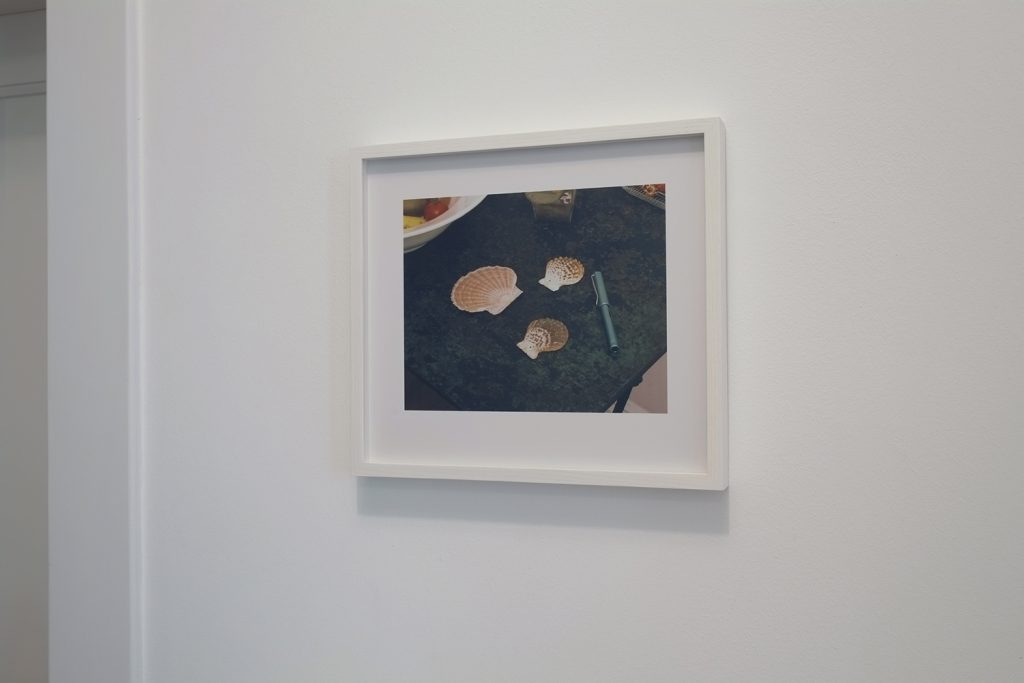
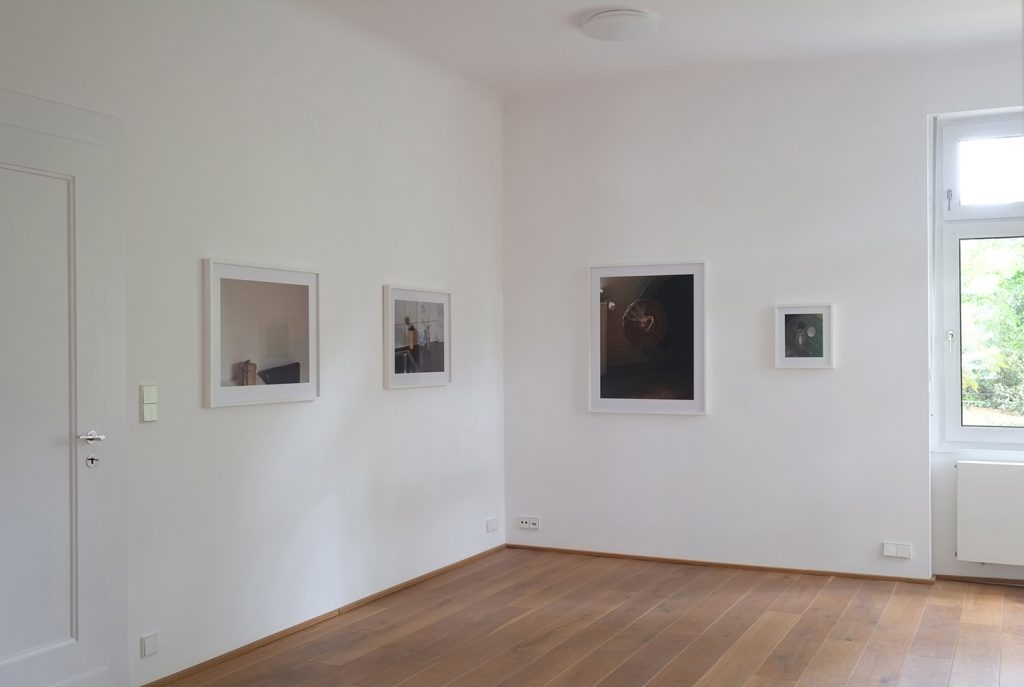
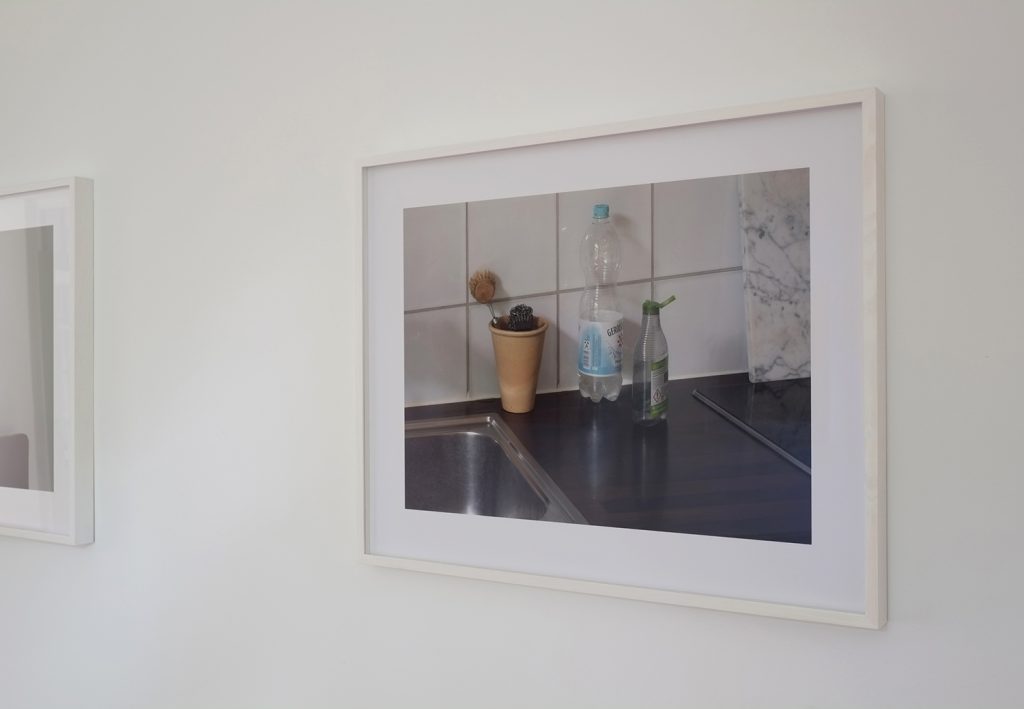

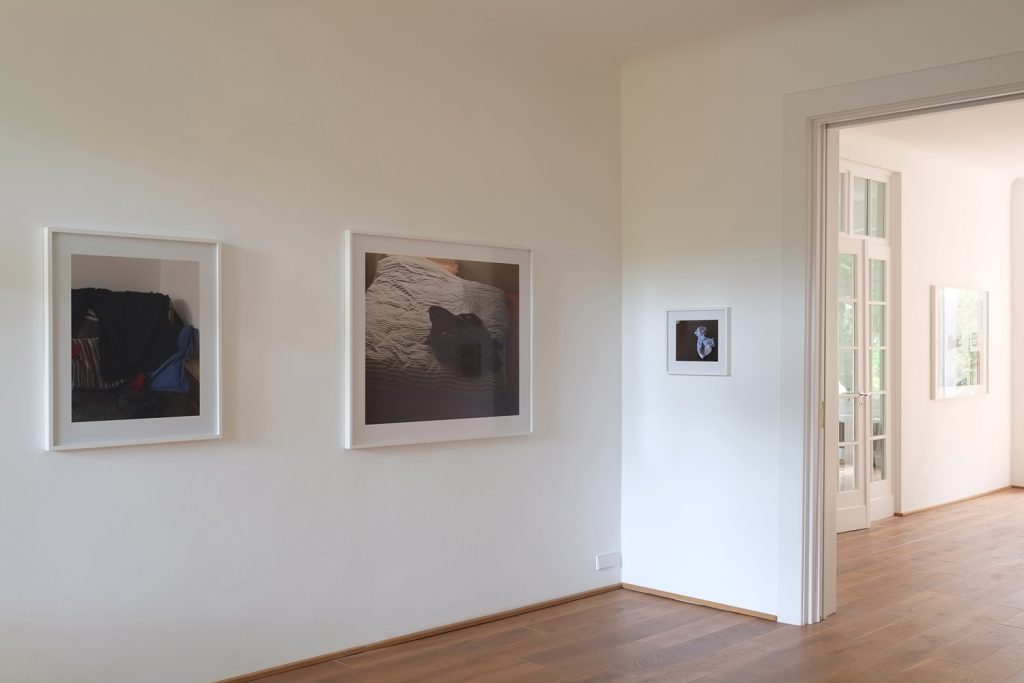
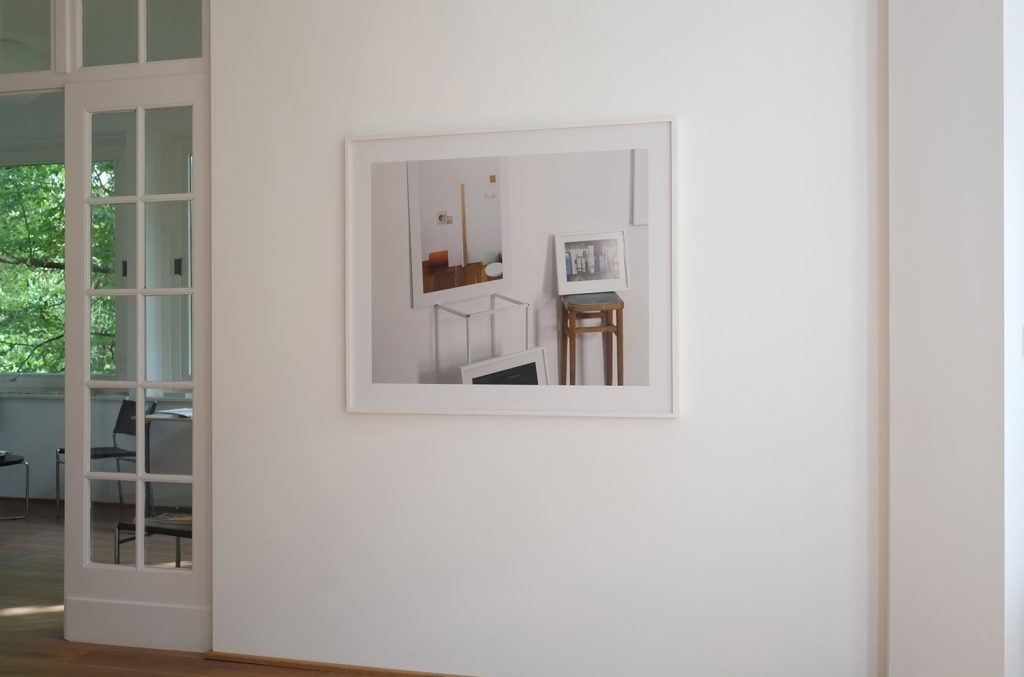
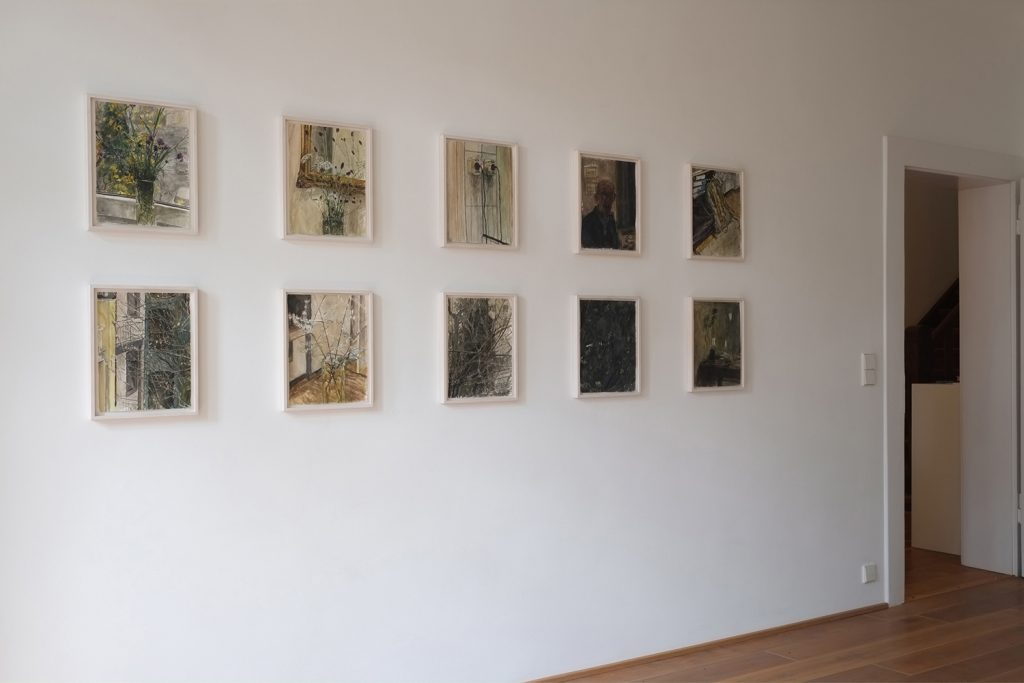
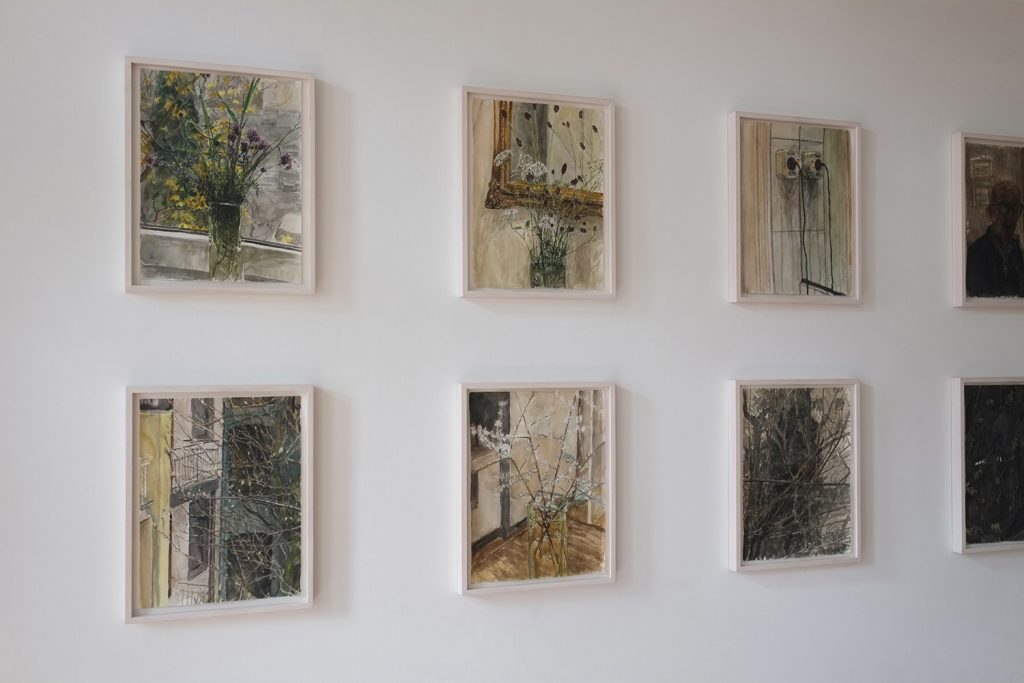
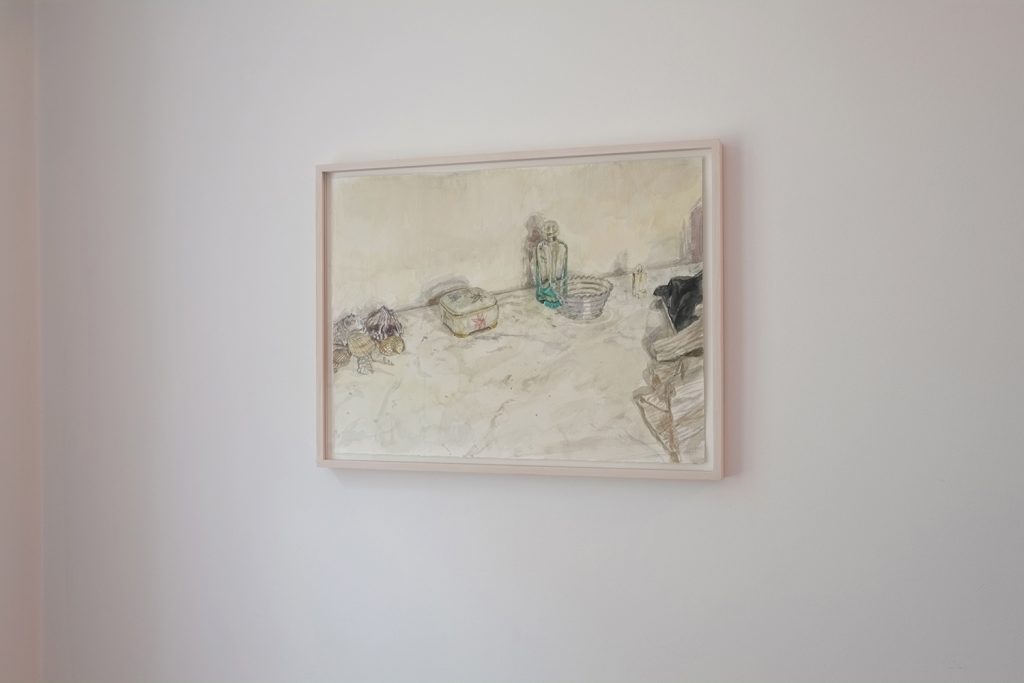

Installationviews Hengesbach Gallery, 2020
